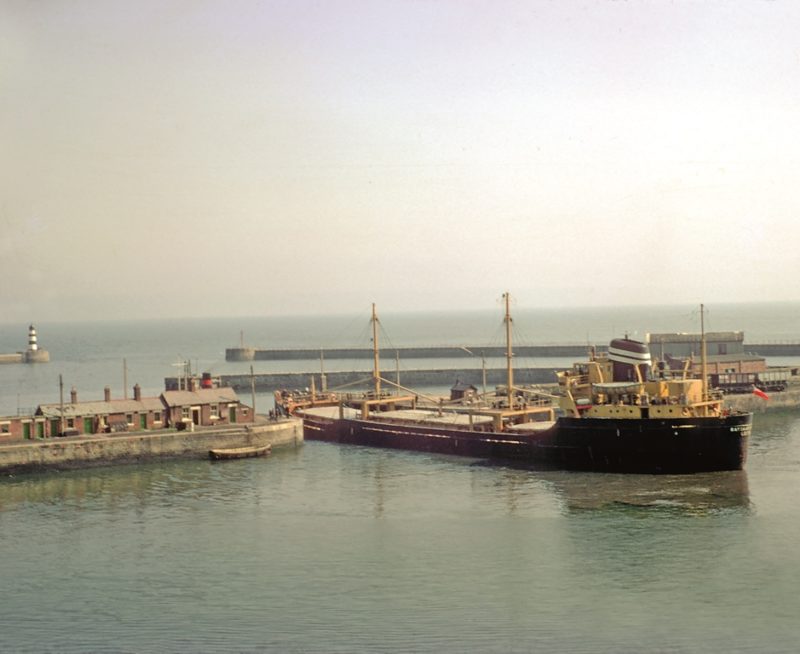
Whaling, Deep Sea and Coastal Cargo Ships
This is a Scottish and Norwegian story as the ancestral home of the Salvesen family was at Mandal to the west of Kristiansand in Southern Norway. The port of Mandal is a small, deep harbour with a depth varying from 10 to 40 metres in a cove on the west side at the southern entrance to Tjeldsund and Indreleia on the coastal route. Thomas Salvesen (1787-1853) ran a timber business and a ship agency, and had a large family of six sons and three daughters. The sons could not all expect to work in their father’s moderately sized business, and were encouraged to gain experience in the Baltic States, and at Grangemouth and Leith in Scotland.
Johan Theodor Salvesen (1820-1865) was the third son of the family, and worked in Prussian ports and in Glasgow before setting up an agency in Grangemouth in 1843. Three years later he opened an office in Leith with partner George Turnbull as Salvesen & Turnbull, and sent to Mandal for his younger brother Christian Salvesen (1827-1911) to help out in the Leith office in 1851. J.T. Salvesen withdrew from the Leith partnership in 1853, which then became Turnbull, Salvesen & Company, and then concentrated in building up a separate fleet of coasters operating out of the Grangemouth office, which continued until the inter-war years with one coaster, and with three managed coasters during World War II.
Carl Emil Salvesen was the eldest son of Thomas Salvesen and ran the Mandal business after the death of his father, and he had married Jane Turnbull, sister of George Turnbull in the Leith office. Christian Salvesen lived and operated from 20, Charlotte Street in Leith, later Queen Charlotte Street and he initially operated as a shipping and forwarding agent, shipbroker and timber merchant, and left the partnership to set up Christian Salvesen & Company in 1872, based in Leith. He founded the mining company, Orkedals Mining, in 1868 with Wilhelm August Thams (1812-1884) and purchased several mines around Lokken in Norway, whose ores eventually provided cargoes for his ships. He began buying coastal steamers in the 1880s and began a regular line to Stavanger from 1886, with nine small coasters owned at the turn of the century. Valund, Tronda and Otra, each of around 700 grt, were the first ships on the Leith to coastal Norwegian trades, three ships came in 1928 from the Glen Line of John Cook & Son and had been engaged in the same trade, and the last five were the coastal motor sister ships Fidra, Otra, Soutra, Logna and Tolsta completed between 1956 and 1960 of 1,333 grt and 1,555 dwt, with Laksa and Tolsta the last to be sold off from Norwegian coastal trading in 1971.
Christian Salvesen was married to Amalie Georgine Salome Andorsen (1828-1901), the daughter of a prominent Norwegian shipowner, and their children included Edward Theodore Salvesen (Lord Salvesen) and Theodore Salvesen, and their grandchildren included Harold Keith Salvesen (1897-1970). The latter was the second son of Theodore Salvesen and Annie Burnet, and he devoted his career to the Salvesen whaling ventures, being present on South Georgia during most of every whaling season. In 1883, Christian Salvesen had delegated management of the shipping business to his eldest sons Thomas and Frederick, who became partners in the business. All are buried in the Salvesen grave in Rosebank Cemetery in Edinburgh, with the plaque at the foot of the grave having the dedication ‘Blessed are the Pure in Heart’.
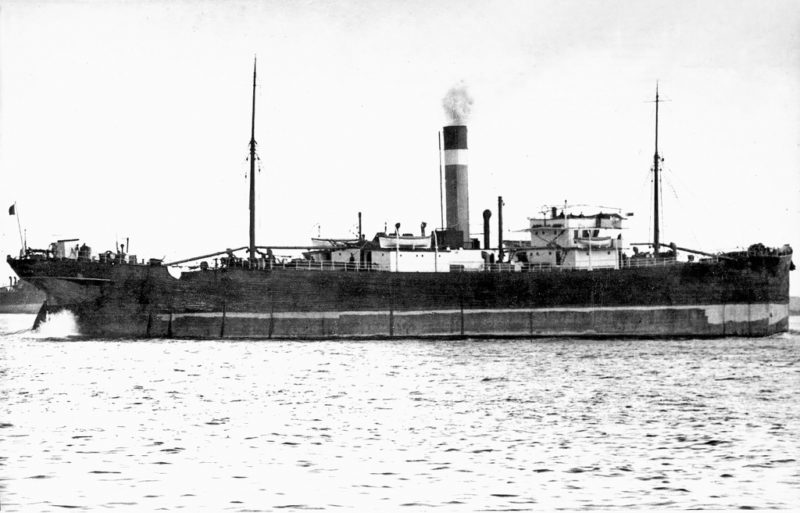
Significant interests in whaling were established at a whaling station at Olna in the Shetlands by 1904, and then in the Antarctic from 1907 at New Island on the Falklands. They established and operated a base at Leith Harbour on the island of South Georgia to the south east of the Falkland Islands. During 1908, Christian Salvesen also invested in the construction of the first electric railway from Lokken to Thamshavn in Norway in support of their mining operations. Christian Salvesen died in 1911, and he had owned a large detached villa set in extensive gardens at Goldenacre in Edinburgh on Ferry Road opposite Inverleith Row, and was buried in Rosebank Cemetery on Pilrig Street in Leith. His offices were on the south side of Bernard Street in Leith in a building that doubled as the Norwegian Consulate for Edinburgh.
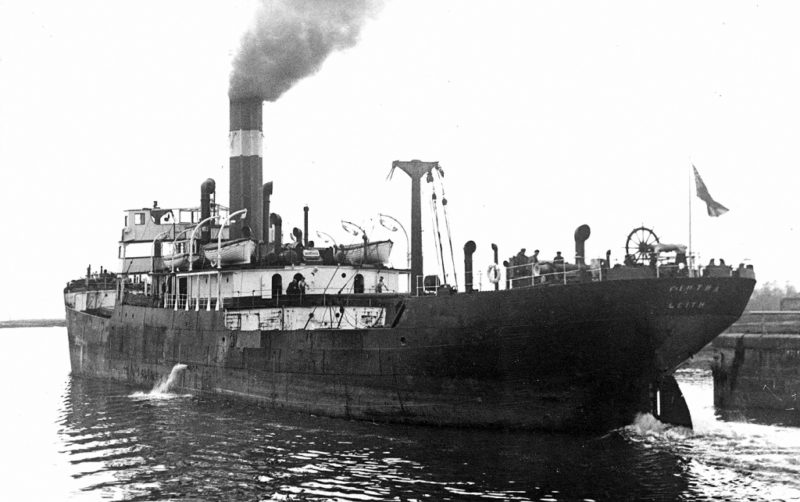
WHALING
To modern sensibilities, the killing of a whale is a foul and unlawful act, but before 1900 whale oil was essential for lighting, lubrication, the manufacture of soap, margarine, nitroglycerine and other explosives, and other ‘essential’ human products. A large blue whale yields 100 tonnes of blubber, 8 tons of blood, 4 tons of tongue, and one ton of undigested krill from its stomach. All of the whale carcasses were efficiently sliced up by the flensers, and every part of the whale was cooked and processed to make whale oil, dried bonemeal and meat extract, and other oils and fats. The Salvesens shore station at Leith Harbour on South Georgia was one of seven whale processing stations on the island, with Salvesens alone processing 8,000 whales per year in 1925 to give a company profit in excess of £300,000 per annum, with a 100% return on investors capital within a year.
Fortunately, all of the whale products have been replaced by vegetable oils today, and whaling has been banned by international law by the International Whaling Commission for almost sixty years since 1963. However, this does not stop Japan, Norway and Iceland continuing the indiscriminate killing of whales under the false claim of ‘scientific research’, a cover for the continuing unlawful butchery of blue whales and other whales. These leviathans of the deep are the greatest creatures known to mankind, and their population of 250,000 was reduced to only 2,000 to 3,000 by 1963. Their numbers have failed to recover and they remain on the endangered list. One will not spot the spout of a blue whale today in the Southern Antarctic Ocean, as the whales there were deliberately and effectively wiped out of the precious and balanced ecosystem.
The rank and putrid of the flensing decks and processing compartments of the Salvesen pelagic whale factories Southern Venturer and Southern Harvester as they passed through the Tyne piers between 1947 and 1963 for their annual refit at Middle Docks in South Shields forced onlookers to quickly move upwind of the stench. This pair of twin funnelled near sisters had been built in October 1945 and October 1946 by the Furness yard on Teesside of around 14,000 to 15,000 grt. The City of London had poured huge quantities of cash in the great whale killing bonanza from 1904 onwards, chiefly by Norwegian and British harpooners, and had quickly removed whales from the Arctic Ocean, forcing them to move to Antarctic shore stations and pelagic whaling (ocean killing and processing of whales from whale factory ships).
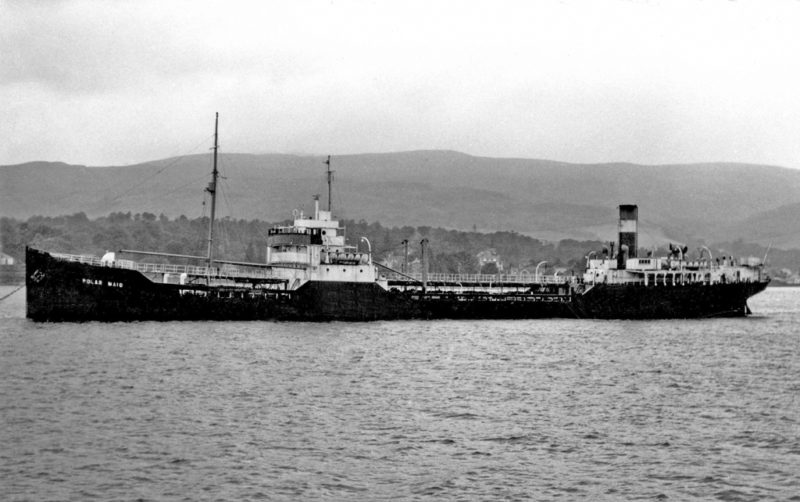
A formidable fleet of 132 whale killing catcher vessels using deadly explosive harpoons invented by Sven Foyn in Norway, to explode and destroy the vital internal functions of the whales, were used by Salvesens from 1908 to 1963. One catcher, Southern Actor, is surprisingly preserved today at Sandefjord, the Salvesen whaling base in Southern Norway to where the whale factory ships would return for lay up after every Antarctic killing season. Southern Actor was completed by Smith’s Dock Co. Ltd. in 1950, and moved to Spanish whale hunters after 1963 until Spain sensibly stopped whale hunting during 1985/86. She was about to be broken up at Bilbao in 1989 but was rescued by the Sandefjord whale project, and was preserved and has been open to the public there since 1996, and is still steamed today.
A big variety and types of converted second hand liners, tankers and tramp ships were converted into whale factories by Salvesens, including Neko of 3,576 grt in 1911, Horatio of 3,239 grt in 1911, Sevilla of 7,022 grt in 1922, Saragossa of 6,359 grt in 1925, Salvestria of 11,938 grt in 1929, Sourabaya of 10,107 grt in 1929, New Sevilla of 13,801 grt in 1932, Southern Princess of 12,156 grt in 1940, and Southern Empress of 12,398 grt in 1941. The last two factories named were the fleet of the Southern Whaling & Sealing Co. Ltd. purchased in 1941 from the Unilever Group, who had decided not to re-enter whaling after the end of the war with its two whale factories and fifteen catchers.
The Southern Whaling & Sealing Co. Ltd. had been set up by the trawler owning firm of Richard Irvin & Sons Ltd. at North Shields in 1911. Richard Irvin was the founder and he had four sons, of which John controlled the extensive North Shields and Aberdeen trawler fleet, while George went south to South Africa, where he founded the African Fishing & Trading Company in 1903. Six years later, he went into partnership with Charles Ocean Johnson, a Swede who had settled there some years before. Together, they established the firm of Irvin & Johnson, which became the largest trawler owner in South Africa. Johnson also had another interest of his own in the Southern Sealing Company, which operated in the waters around the Prince Edward Islands.
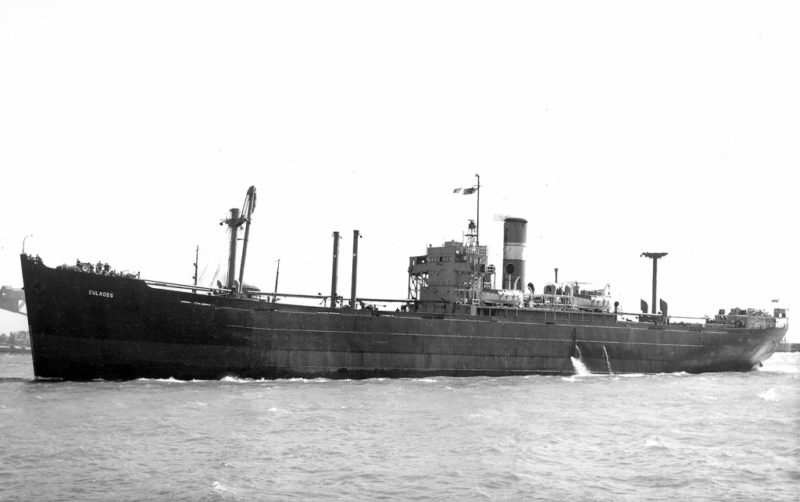
At home in North Shields, John Irvin was long eager to enter the whaling business, and had been granted a lease by the Colonial Office in 1911, which permitted him to establish a shore base in South Georgia at Prince Olav Harbour. The newly formed Southern Whaling Company of John Irvin was then merged with the Southern Sealing Company of George Irvin. The new company operated out of Prince Olav Harbour during the Antarctic summer and for the rest of the year off the South African coast. Satisfactory average profits were made, and the company capital was largely used in 1916 to buy the factory and supply ship Restitution of 3,290 grt and built back in 1885, but she foundered on her way south to the Antarctic. A very good offer was then received from Lever Brothers, who kept several Irvin & Johnson whale catchers, and then purchased two large tankers from Eagle Oil in the 1920s for conversion to factory ships. This was the pair of factory ships taken over by Salvesens in 1941.
One should not presume that the Salvesen fleet was the only such pelagic whaling fleet, many other smaller Norwegian and British whaling companies operated between one and three pelagic whale factories during the whale killing bonanza of forty years from 1923 to 1963, hauling whale carcasses up specially cut ramps in the sterns of converted factory ships to allow carcasses to be efficiently cut up in only twenty minutes by the flensers. The flow of whale oil from the deceased whales was so great that a considerable fleet of tankers continually carried whale oil back to Europe during the six month southern killing season. The neighbouring whale station of Stromness was later incorporated into that of Salvesen at Leith, and a floating dock was purchased for the annual refit of up to sixty whale catchers.
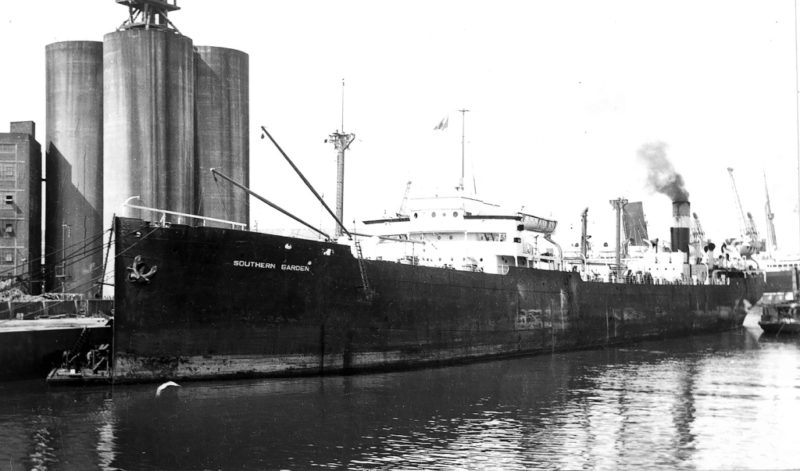
DEEP SEA TRAMPING
Marna of 1,022 grt was the first Salvesen steamer in the Mediterranean trades when she was completed in 1879 by Austin & Hunter at Sunderland. Three ships were purchased from Sir James Knott and his Prince Line of North Shields in 1895 and renamed Folda, Logna and Glitra and traded to Spanish, Italian and North African ports. Salvesens had a fleet of nine tramp ships operating in the Baltic, Mediterranean and Black Seas, with regular calls at Malta and Alexandria by the early 1900s. The company lost ten ships to U-boats and marine causes during World War I, these were:-
Glitra – Captured and scuttled by U17 14 miles WSW of Skudesnes, Norway on 29th October 1914 while on a voyage from Grangemouth to Stavanger with coal
Ailsa – Captured and scuttled by U17 off Bell Rock, Scotland on 18th June 1915 while on a voyage from Trondheim to Leith with wood
Horatio – Sank in Leith Harbour, South Georgia on 11th March 1916
Wavelet – Wrecked off Norway on 27th August 1916
Katherine – Captured by the raider Moewe on 23rd February 1917 200 miles north east of St. Pauls Rocks while on a voyage from Rosario to the U.K. with wheat.
Marna – Torpedoed and sunk in the North Sea by UC44 on 12th March 1917 while on a voyage from Leith to Norway
Coronada – Torpedoed and sunk off Tory Island, Ireland by U81 on 13th March 1917 while on a voyage from the Clyde to South Georgia, 9 lost
Cadmus – Torpedoed and sunk in the North Sea 20 miles from Flamborough Head on 18th October 1917 while on a voyage from Dunkirk to Blyth with empty shell cases
Ardandearg – Torpedoed and sunk to north east of Malta on 14th March 1918 by UC53 while carrying Government stores, 2 lost including the Master
John O. Scott – Torpedoed and sunk off Trevose Head, Cornwall on 18th September 1918 by UB117 while on a voyage from Barry to Dover with coal, 18 lost
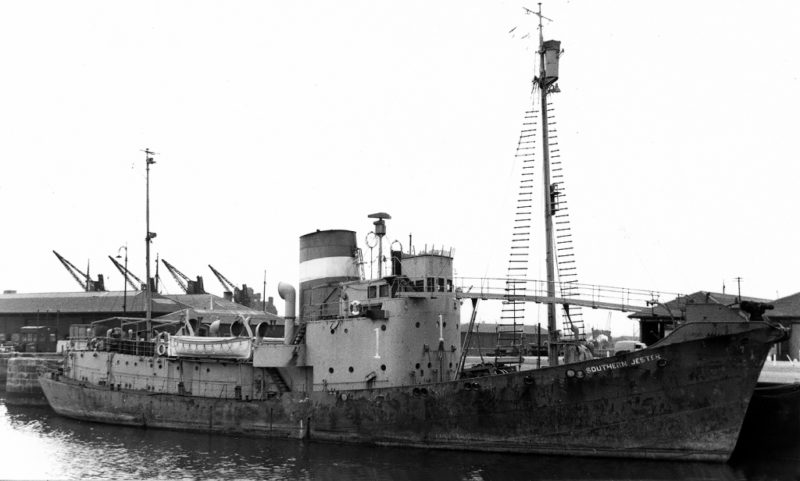
In 1920, the three partners of Christian Salvesen & Company operating out of 29 Bernard Street in Leith were Frederick G. Salvesen, Thomas E. Salvesen and J. Theodore Salvesen, and they were running a fleet of six deep sea tramp ships, a regular cargo line of coasters from Leith to Stavanger, Bergen, Aalesund, Christiansund and Drontheim, and a passenger and cargo service from Leith to Gothenburg. The six deep sea tramps were Albuera of 3,460 grt, Katanga of 3,316 grt, Overdale of 3,495 grt, Pentaur of 3,061 grt, Ravenstone of 3,050 grt and Sellasia of 3,474 grt. The trades included the coal out and homeward trade from the Plate with grain, the ‘Eternal Triangle’ trade of coal and beer out to the Mediterranean ports of Malta, Alexandria, and the Levant, then ballast to the Black Sea to load grain homewards for Northern European ports, as well as the Baltic timber trades.
The Depression years of 1930 to 1935 caused a big slump in the demand for whale oil, whale meat, margarine and other whale products, with several rival whaling companies taken over, as well as a big loss of confidence in the Norwegian coastal, North Sea and Baltic Sea coal and timber trades. The deep sea tramping fleet had increased to seven tramps, and the total Salvesen fleet was very large and was mainly composed of five whale factories, four support ships and sixty catchers, with each factory ship needing a flotilla of ten to twelve catchers to keep them supplied with whale carcasses.
The deep sea tramps were Fintra of 3,200 dwt, Albuera of 6,200 dwt, Brandon of 9,711 dwt, Seringa of 7,950 dwt, and formerly Falls City of William Reardon Smith & Sons Ltd. of Cardiff, and three new sister tramps of 9,250 dwt completed by the Henderson yard on the Clyde as Saganaga and by the Caledon yard at Dundee as Shekatika and Sirikishna. Unfortunately, all of this trio of new deep sea tramps were to have very short careers, falling victims to the wolf packs of U-boats.
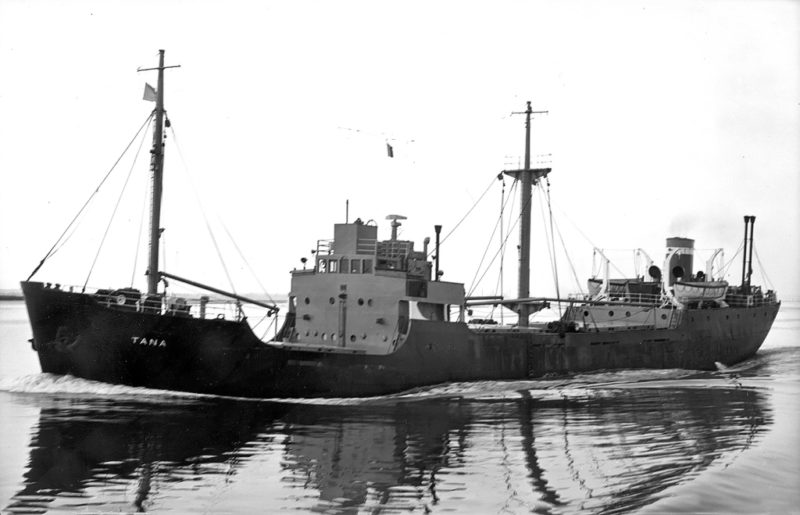
During World War II, the whale factories were used as vitally needed tankers, and the whale catchers were pressed into naval service as convoy escorts to help the overstrained corvettes, frigates and destroyers. Six whale catchers were lost in Royal Navy service and three while serving with the Russian Navy, and many other catchers were worn out at the end of the war and sent for immediate breaking up. The Salvesen fleet lost fifteen ships during World War II, these were:-
Glen Farg – Stopped, torpedoed and sunk by U23 when 50 miles north east of Duncansby Head on 4th October 1939 when on a voyage from Trondheim to Methil with pulp, carbide paper, ferrochrome and general, 1 crew lost
Brandon – Torpedoed and sunk by U48 150 miles west of Land’s End on 8th December 1939 while on a voyage from Cardiff to Port Everglades in ballast, 9 crew lost
Giralda – Bombed and sunk off Orkney on 30th January 1940 while on a voyage from Ayr to Kirkwall with coal, 23 crew lost
Albuera – Torpedoed and sunk by E boat in English Channel on 24th June 1940 while on a voyage from Chatham (NB) to the Tyne with 4,800 tonnes of pitprops, 7 crew lost
Salvestria – Mined and sunk on 27th July 1940 off 2.8 miles off the Inchkeith Lighthouse, Scotland while on a voyage from Aruba to Grangemouth with 9,200 tonnes of oil, 10 crew lost
New Sevilla – Torpedoed off Malin Head and sank off the Mull of Kintyre on 20th September 1940 while on a voyage from Liverpool to Aruba and South Georgia with whaling stores, 2 lost
Shekatika – Torpedoed and sunk off Rockall on 18th October 1940 while on a voyage from Gaspe (St. Lawrence) to Hartlepool with pitprops and steel, all crew saved
Strombus – Tanker mined in the Bristol Channel on 30th October 1940 while outward bound for the Antarctic, beached and broke in two four days later
Sirikishna – Torpedoed and sunk in the North Atlantic by U96 in position 55 North, 21 West on 24th February 1941
Peder Bogen – Torpedoed and sunk in the North Atlantic on 23rd March 1942 while on a voyage from Trinidad to Halifax (NS) with 14,000 tonnes of fuel oil, crew all saved

Saganaga – Torpedoed and sunk at Wabana in Newfoundland on 5th September 1942 while at anchor loaded with iron ore before starting her voyage across the Atlantic, 27 crew and three gunners lost
Southern Empress – Torpedoed and sunk in the North Atlantic on 13th October 1942 while on a voyage from New Orleans and New York for the Clyde with fuel oil, 24 crew, four gunners and 20 passengers lost
Sourabaya – Torpedoed and sunk in the North Atlantic on 27th October 1942 while on a voyage from New York to Liverpool with 7,800 tonnes of fuel oil and 200 tonnes of war stores, 26 crew, four gunners and 47 passengers lost
Fintra – Torpedoed and sunk off North Africa on 23rd February 1943 while on a voyage from Philippevile to Algiers with ammunition, 5 gunners lost
Southern Princess – Torpedoed and sunk in the North Atlantic on 17th March 1943 while on a voyage from New York to the Clyde with 10,053 tons of fuel oil, and 463 tonnes of deck cargo of locomotives, invasion barges etc, 2 crew and 2 passengers lost, cargo burned furiously
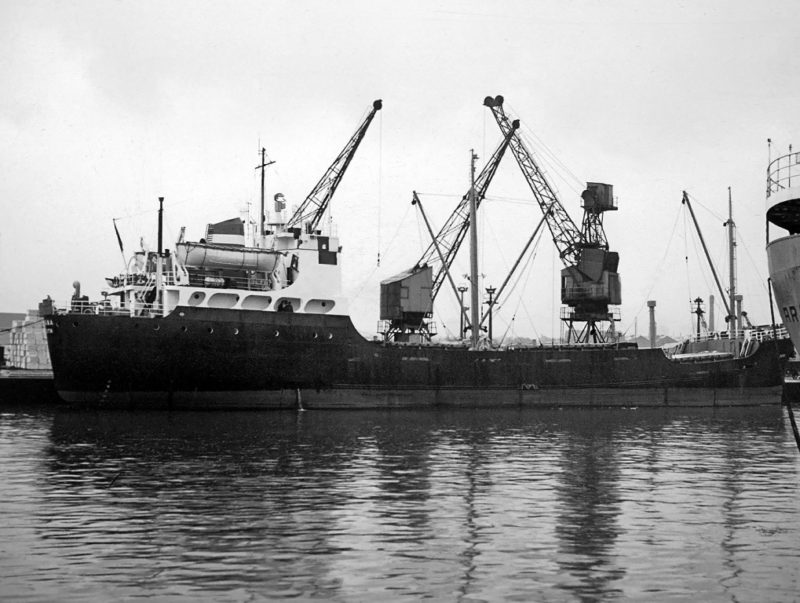
A large number of ships were managed by the company for the Ministry of War Transport (MOWT), many of which were scuttled in June 1944 to form the Mulberry Harbour B, which was essential to the success of Operation Overlord on D-Day and the recovery of Europe from the grasp of the German Axis forces. The fleet was rebuilt with three war built standard ships of 10,000 dwt, renamed Culrain, Culross and Culter, together with an engines ‘midships standard type of 4,200 dwt renamed as Struan. The latter ship lasted the longest in the Salvesen fleet until late 1959 as she was used on the Canadian and Norwegian coasts as well as carrying stores to the Antarctic whaling fleet. The first of a class of six five hold motor tramps was obtained from the Oskarshamns yard at a bargain price in January 1959 as her original owner Olaf Pedersen Rederi A/S of Oslo had defaulted on the staged payments. She was renamed Saldanha of 9,000 dwt as an open shelterdecker and of 13,200 dwt as a closed shelterdecker, with an overall length of 487.0 feet, moulded beam of 62.0 feet, and moulded depth of 27.0 feet. The remaining five of this class were named Saldura, Salmela, Salvada, Salvina, and Salambria, but whereas the first two examples were given two bipod masts and a goalpost masts, the later examples had centreline masts as well as the goalpost mast and 18 derricks for cargo handling.
The ‘S’ class sextet were used on charter to the main cargo-liner companies of that period from 1959 to 1973, but also in the mid 1960s by the Salvesen’s own liner service from Canadian and American ports to Northern Europe, known as Chimo Lines. However, as bulk cargoes were later obtained via contracts of affreightment, a move into the ownership of bulk carriers was essential. Inverleith of 25,325 dwt and completed in July 1961, was obtained from Court Line as Cressington Court in June 1966. Verdala of 28,333 dwt was completed by Uraga Heavy Industries Ltd. in Japan for the Glasgow tramping firm of Harrisons (Clyde) Ltd. but ownership and management was transferred to Salvesens in 1973 for one year before her sale to Bibby as Shropshire.
Two larger bulk carriers were operated by Salvesens between 1972 and 1982 in Inveralmond of 41,870 dwt and Invershin of 30,165 dwt. Two coastal cargo ship sisters were also managed for Harrisons (Clyde) Ltd. between 1969 and 1983 named Voreda and Virgilia of 2,600 dwt before they moved to Gracechurch Shipping Ltd. on charter.

COASTAL COAL TRADES
Salvesens entered the North East of England coal trades in 1963 by the purchase of their fellow Leith shipowners A. F. Henry & McGregor, who had themselves entered the same trade in 1947. During a forty year period from 1907, when they had become shipowners, A. F. Henry & McGregor had owned a total of 23 small coasters with names of headlands ending in ‘Head’. They were used in the roadstone and coal trades from the Firth of Forth to London returning to Scottish ports with cement. The largest of these Leith coasters was Tolsta Head of 673 grt and built in 1911 and owned between 1934 and 1946 and originally Seaford of Stephenson Clarke Shipping. Five of this Leith fleet of coasters had become war losses during World War I.
Due to the rundown of Scottish coal shipments from the Port of Methil in 1947, an entry was made into the North East England coal trades by the purchase that year of the larger engines ‘midships Maud Llewellyn of 1,434 grt and completed in 1921 and renamed Dunvegan Head. Two further war built standard colliers were purchased in 1949 and renamed Kinnaird Head and Rattray Head. The fleet in 1950 consisted of five steam coasters used in their traditional Scottish trades, and three steam colliers running from the Tyne to London with coal. Dunnet Head of 515 grt and built in 1921 was the first of these steam coasters to go for breaking up at the end of 1950, followed by St. Abbs Head of 616 grt and built in 1914, which crossed to Rosyth from Leith at the end of 1953. Holburn Head of 489 grt and built in 1925 and Cantick Head of 488 grt and built in 1921 were sold to S. W. Coe of Liverpool in 1954/55 to become their Bannrose and Bannspur. The Norwegian steam collier Ingwi of 1,937 grt was purchased in 1955 to replace the old Dunvegan Head and was renamed Denwick Head.
Four new motor colliers joined the Leith fleet between 1952 and 1958 as Marwick Head, Dunnet Head, St. Abbs Head and Cantick Head. Thus, the fleet in 1960 was the steam coaster Barra Head of 671 grt and built in 1930 as Portavon at Goole, and seven steam and motor colliers. St. Abbs Head of 1956 and of 647 grt was small enough to take part in the traditional stone shipments from Inverkeithing. She took over this trade completely when Barra Head was sold for breaking up in August 1961 at Grangemouth. She usually returned from the Thames with cement for North East Scottish ports. The remainder of the fleet ran from the Tyne, Blyth, Wear and Hartlepool to London, usually returning in ballast.
In August 1963, Salvesens purchased this small coastal fleet of five motor colliers from its Leith owners, including the new Kinnaird Head of 1,985 grt completed seven months earlier that year at the Greenock yard of George Brown & Company (Marine) Ltd. Previously, Salvesens had operated six coasters of 1,560 dwt from around 1955 in shipping coal and coke from Hartlepool and the Tees to a new steelworks at Mo-i-Rana in Norway. In November 1965, Rattray Head was the first new motor collier to be ordered, the order going to the Wallsend yard of Clelands, famous for their side launches. Rattray Head also traded more widely, often returning from the Baltic with timber, and even operated in the Canadian Great Lakes on time charters.
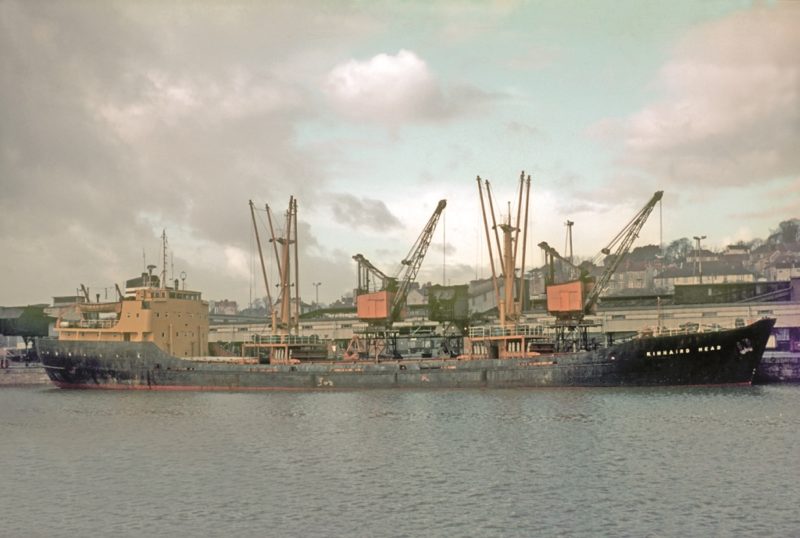
In the mid 1960s, the demand for larger colliers of 7,000 dwt for the East coast coal shipments to the nationalised gas and electricity industries was met in 1968/69 by the delivery of two new Dutch built collier sisters of 6,910 dwt, Dunvegan Head and Duncansby Head. This coal trade continued to hold up to its former levels in the early 1970s, and two smaller Dutch built colliers, Tod Head and Troup Head of 2,800 dwt, joined the fleet in 1971 to increase the fleet to six colliers. The latter pair ran weekly from Dunston Staithes on the Tyne to the Thames, but were also used in the Irish Sea trades and the bulk trades from North African ports such as Sfax. They wore the red, white and blue funnel colours of Salvesens, instead of the black with two thin white bands of Henry & McGregor, and similar to that of the Sharp Steamship Co. Ltd. of Newcastle but with less spacing between the white bands.
In 1975, the two large colliers of 7,000 dwt, Duncansby Head and Dunvegan Head, were purchased by the Central Electricity Generating Board (CEGB) to become Beacon Point and Fort Point with management retained by Salvesen. Beacon Point is a headland in County Durham and Fort Point is a headland at a former artillery fort situated at the end of a peninsula at Sheerness.
The company also took over management of two similar sized colliers in Castle Point, near Canvey Island in Essex, and Dolphin Point, with several possible sites for watching dolphins on the East Coast including Chanonry Point in the Moray Firth. This management of electricity colliers was extended even further in 1983 when Salvesens became managers of all of the CEGB fleet, taking over from Stephenson Clarke Shipping after fifty years of continuous management.
By 1983, the Salvesen managed collier fleet consisted of three new Japanese built colliers of 7,160 dwt in Sumburgh Head, Barra Head and Rora Head, having sold the smaller Tod Head and Troup Head in 1981. Sumburgh Head was sold in 1987 after ten years in the North East Coast coal trades, and her two sisters were sold for further trading with Jebsens of Norway in the North European coal trades including coal from Poland to Rotterdam.
The last of the CEGB electricity fleet was managed until 1989 when Salvesens withdrew from shipowning, and included a trio of ‘super’ colliers of 20,000 dwt in Sir Charles Parsons, Lord Hinton and Lord Citrine. They then came under Jebsen management alongside Hordnes, Hernes and Husnes, the new names of the Japanese built trio of 7,160 dwt formerly owned by Salvesen. The bright funnel colours of red, white and blue of Salvesen had been seen in the North East coal trades for over thirty years from 1955 to 1989.
The Masters and Mates of Henry & McGregor and Salvesen colliers were well advised to keep well clear of the headland names of their ships during severe onshore or lee shore storms, and not cut corners to shorten the voyages. These headlands were:-
Barra Head is name of the cliffs on the southern side of the island of Barra Head (Berneray) ten miles south of the island of Barra in the Outer Hebrides. Landing by air at Barra is just about the most exciting airport in the world with the beach ‘runaways’ completed covered by the sea twice a day. The ‘runways’ are the firm sands of Traigh Mhor or Cockle Strand, and I knew this beach well when landing to work on the guided missile base on the west of the island many years ago.
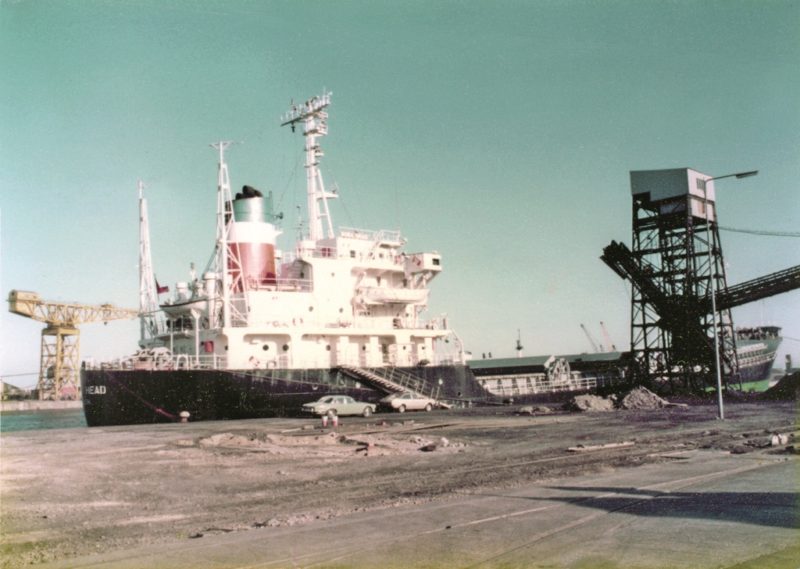
Cantick Head has a lighthouse on the South Orkney island of South Wallis
Dennis Head is a ruined lighthouse on North Ronaldsay in Orkney
Denwick Head is between Mull Head and Northquoy Point on Deer Sound in Orkney
Duncansby Head is near John O’ Groats
Dunnet Head is to the west of John O’ Groats
Dunvegan Head is on Skye and has an Old Beacon lighthouse built in 1789 by Robert Stevenson and his stepfather Thomas Smith
Holburn Head is at Scrabster
Kinnaird Head is a headland within the town of Fraserburgh
Marwick Head is on the north west coast of Mainland in Orkney with the monument to the loss of HMS Hampshire and Lord Kitchener
Noss Head is to the south of Duncansby Head
Rattray Head is a headland in Aberdeenshire midway between Fraserburgh and Peterhead
Rora Head is near to the Old Man of Hoy on the island of Hoy in Orkney
St. Abbs Head is to the north of Eyemouth in Berwickshire
Sumburgh Head is at the southern end of Shetland
Tod Head is 6 miles to south of Stonehaven in Aberdeenshire
Tolsta Head is on the east side of Lewis, 20 miles north of Stornoway
Troup Head lies 7 miles east of Banff
DIVERSIFICATION
Salvesens diversified into many other interests, one being fishing allied to whaling, with much money spent on the development of the first factory freezer trawlers in the world between 1947 to 1970, which was only a partial success as many members of the public did not like the taste of defrosted frozen fish. The idea was copied on a very large scale most successfully by Russian and Eastern bloc countries, whose fish factories were often seen in Mallaig harbour. Later, interests were taken in fishing fleets worldwide, and even to partially finance trawlers by taking shares in new fishing boats of individual Scottish fishermen.
Oil drilling and oil rig safety and rescue boats include the conversion of eighteen former trawlers to their new role working from Aberdeen, including three of the former trawling fleet of the Ranger Fishing Co. Ltd., whose base was in the Albert Edward Dock at North Shields.
Salvesens first acquired a half interest and then complete control of Safetyships, which in addition to their main use, could also be used for oil rig maintenance, inspection, surveying as well as pollution control. In 1980, Salvesen Offshore Services began to manage a remarkably mobile anti-pollution vessel named Fasgadair of 500 grt, and equipped with a bow ramp for oil pollution operations on beaches.
Two drillships were also owned and operated by Salvesen Offshore Drilling, the first being a war built engines aft C1-M-AV1 type purchased in 1971 and converted in 1972 into the drillship Dalmahoy in Tampa (Florida).
The ore carrier Philippe L. D. had completed a 15 year charter to BISCO, and was sold in May 1974 to Salvesens for conversion by the Middle Docks yard at South Shields into a drillship, and commissioned in April 1976 as the drillship Dalkeith. The conversion lasted 18 months and included the lengthening and widening of her hull, the installation of a tall red and white painted drilling tower ‘midships, but also much other equipment e.g. helideck, gas flare and many piperacks to work in water depths up to one thousand feet. Dalmahoy was sold in 1979 and Dalkeith in 1980 after working on oilfields worldwide including offshore Western Australia, offshore Libya and in the Persian Gulf. Dalkeith was renamed Dan Baron in 1980, Viking Explorer in 1987, but suffered a bad gas explosion and fire on 7th September 1988 in position 00°46′ South, 117°46′ East whilst drilling in offshore oilfields of the Strait of Makassar in Indonesia, the vessel being lost.
POSTSCRIPT
Salvesens gave up shipowning and ship management in 1989 after just over one hundred years in the marine sector. Logistics and a big fleet of lorries carrying food, drinks and consumables for clients such as Marks & Spencer and Safeway was the new reason of existence for the company after the company purchased Swift Transport Services in 1993. Salvesens was floated on the London Stock Exchange in 1989 with its Grimsby Cold Storage and Nationwide Distribution Divisions as their main business activity. The company became a diversified industrial group, with wide ranging interests e.g. brick manufacture, house building, food cold storage and distribution, theatre, TV and media light and sound equipment hire, and Aggreko generator hire to mention a few.
Later, in October 2004, Salvesens was in talks with logistics company TDG for a merger worth £350 million. Similar merger talks with Hays in 1996 and with Swedish investor Custos in 2000 were rejected. However, on 2nd October 2007, the Salvesen board of directors recommended acceptance of a cash offer of £254.4 million from Norbert Dentressangle of France, and the takeover was completed on 14th December 2007.
The famous Salvesen name disappeared forever and was replaced by the Dentressangle name, with huge English Channel logistics movements to and from the European Union.





Comments
Sorry, comments are closed for this item